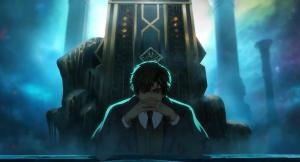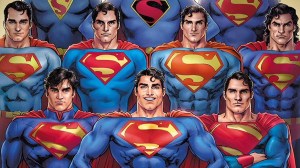
This week, Jim Zub and Steven Cummings’ Wayward returns for its third story arc at Image Comics. There series began by following young Rori Lane as she acclimated to life in Japan, and discovered her untapped supernatural potential in the process. Since then, the series has progressed into story about a group of young gods – Rori and her friends – fighting to find their place in a world where the old gods aren’t very welcoming.
Videos by ComicBook.com
With Wayward #11 kicking off the new arc this Wednesday, we spoke to Zub about his world and character, how the series has changed, and where the series is going.
When Wayward was first announced, the tagline was “Buffy the Vampire Slayer for a new generation.” The description seemed apt in its first two arcs, but the ending of the second arc seemed to suggest the series would be growing beyond that tagline. How would describe what Wayward is becoming, and will it maintain that innate Buffy-ness?
Zub: That tagline was a shortcut, a way for us to explain to readers and retailers the overall feel of what we were going for, not necessarily something we intended to copy. Even Wayward’s first arc takes things in quite a different direction, and the second arc pushed it even further away from being “Buffy-like.”
We have all kinds of surprises still to come, but I think readers can tell that with the third arc we’re in waaaay different territory. It’s been fun giving people a bit of that teenage high school supernatural drama and then pulling the rug out from under them to show them a much bigger story filled to the brim with big mysteries and bigger mythology to explore. I was confident that Buffy fans would enjoy it even though we weren’t just doing “Japanese Buffy.”
Now that Rori and her friends better understand what they are and what they’re up against, what is their mission going forward? Do they actively want to remove the old gods, or do they just want to be left to their own devices?
Zub: That’s the problem with teenagers, sometimes they struggle just to find out what direction they should be going.
Keep reading…
Are these new gods meant to epitomize a concept or idea, like “Thor, god of thunder” or “Amaterasu, goddess of the sun,” or is god simply a word denoting a being of supernatural origin and power? Would this be something thrust on them, or would they have to define what they represent for themselves?
Zub: Each of the teenagers definitely encompasses something in terms of the way they focus their abilities, but we haven’t be explicit about it yet. Unfortunately I have to leave you hanging on this question as well because I don’t want to spoil what’s coming down the pipe.
The series takes place in Japan, and we’re introduced to the setting through the eyes of Rori, who has been living abroad. Did you feel it was important to introduce a Western audience to the Japanese setting through a more Westernized character?
Zub: I don’t think it was an absolute, but it definitely made things easier since we could introduce elements to Rori and the reader at the same time without having Japanese characters info dumping on things they already know about their city or their myths. Rori being from outside Japan is also important to the overall story and things yet to come.
With the series relying so heavily on Japanese mythology and folklore, what is the research process like for the series? How much of a priority is accuracy to the source material, versus making the material work for the story and the visual aesthetic you’ve established?
Zub: I do quite a bit of reading on Yokai and Japanese folklore to look for little nuggets of good material we can use in the series. Steven also suggests a lot of different stuff as it goes along, specific creatures he wants to illustrate or places he thinks would make for a good setting for specific scenes. Zack Davisson, who writes the essay material in the back of each issue, reads over the story outlines and scripts and makes suggestions as well in terms of how some other history/mythological elements might be reflected or symbolism we can add to the mix.
The nice thing about mythology, and this holds true for almost every culture, is that a lot of it is murky; contradicting stories, changing details. We can pick and choose which versions of these creatures we use and fill in gaps with our own ideas just as people do with Euro-centric mythology like vampires, werewolves, or dragons. We can be pretty accurate to the lore and still do a lot of world building of our own.
Wayward #11 hits store shelves and digital on Nov. 18.









